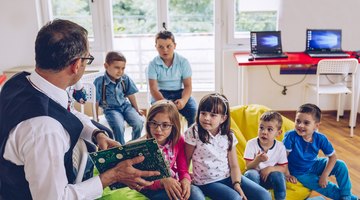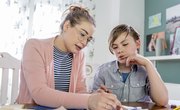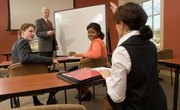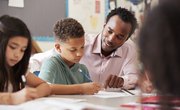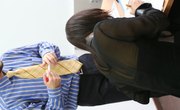Jean Piaget was an influential psychologist of the 20th century. Piaget was especially interested in developmental psychology and studied the different ways humans acquire, retain and develop knowledge. Today many teachers still use Piaget's theories to enhance students' educations. Piaget studied knowledge development in people of all ages, including young children, and his theories are relevant for K-12 classrooms. Applying Piaget's theories to your curriculum is simple, effective and beneficial for students and teachers alike.
Research Piaget's developmental theory. Piaget believed that children reach distinct stages in cognitive development. Between ages 2 and 7, children are egocentric and have trouble understanding different viewpoints or empathizing with others. They classify objects by a single characteristic, such as color or shape, without acknowledging other qualities. From ages 7 to 11, children are capable of logical thought about objects or events. They classify objects by several different characteristics. Young people over the age of 11 are able to think abstractly and hypothetically. They feel more concern for ideological and moral issues, not just concrete reality.
Guide the students. Piaget recommended that teachers take an active, mentoring role toward students. Instead of pushing information at students while they sit and listen passively, share the learning experience and encourage students to be active and engaged. Take your students seriously and respect their ideas, suggestions and opinions. Supplement traditional lectures with relevant, hands-on classroom activities that let students experience the content for themselves.
Encourage students to learn from their peers. This is especially relevant for children in the 2 to 7 age range but applies to students of all ages. Learning to listen thoughtfully and sensitively to their peers and respect a variety of different viewpoints will provide lifelong benefits for your students. Since different students excel at different areas of knowledge, learning from peers also provides a thorough education.
Allow students to learn from their mistakes. Piaget believed that children develop knowledge about the world through trial and error. Mistakes can be frustrating for the students as well as the teacher, but try to model patience and guide the student toward a different conclusion. Mistakes show that the student is actively interacting with the world around her and trying out new ideas for herself.
Focus on the process as well as the result. Instead of focusing on having one right answer, pay attention to the many different steps it takes to reach a finished product. For instance, during an art lesson ask the students to notice the different ways they create a painting. Some may start at the bottom edge of the easel while others begin at the middle.
Respect each student's individual interests, abilities and limits. Different children reach developmental stages at different times. Rather than pressuring every child to adapt to one learning style, pay attention to each child's developmental stages and adapt the lessons accordingly. Piaget encouraged independent, hands-on learning and opportunities for discovery. Plan a variety of classroom activities that accommodate different learning styles, such as visual or auditory.
Related Articles
References
Writer Bio
Sally Murphy began writing professionally in 2000. She has worked as a writing instructor and written for various organizations and publications on topics ranging from history to hairstyles to television shows. Murphy graduated with a Bachelor of Arts in English and also holds a Master of Fine Arts in writing.

